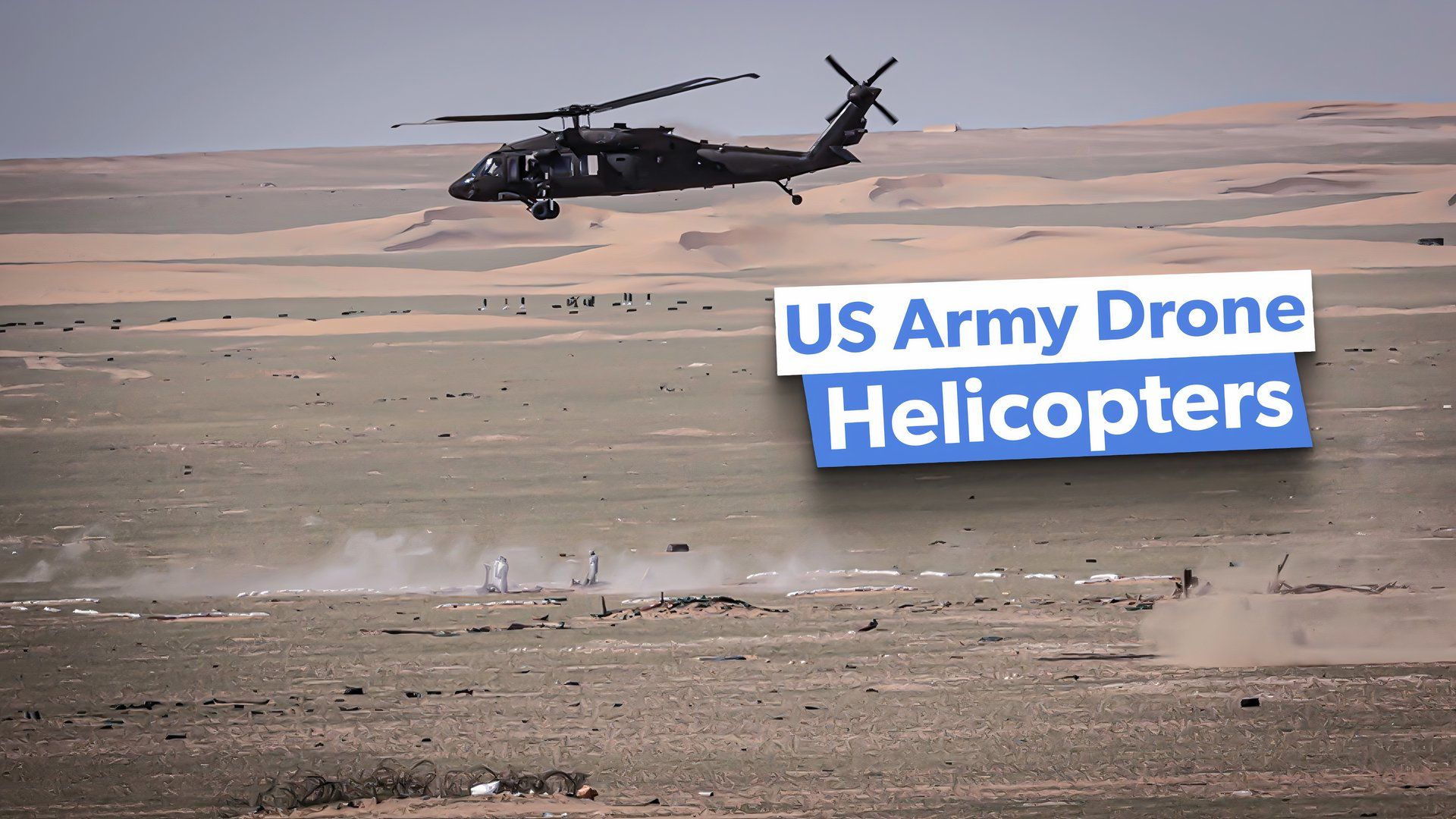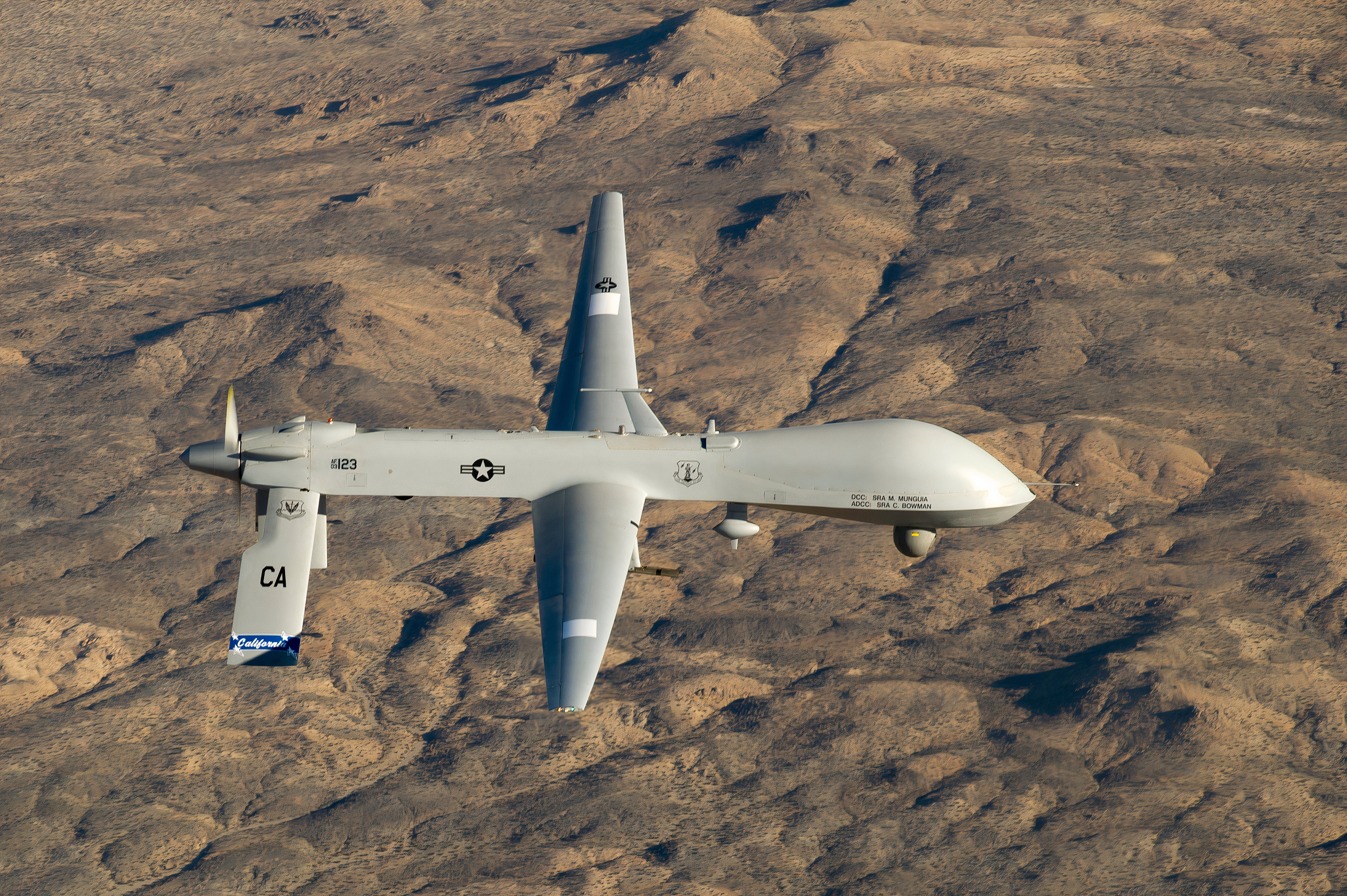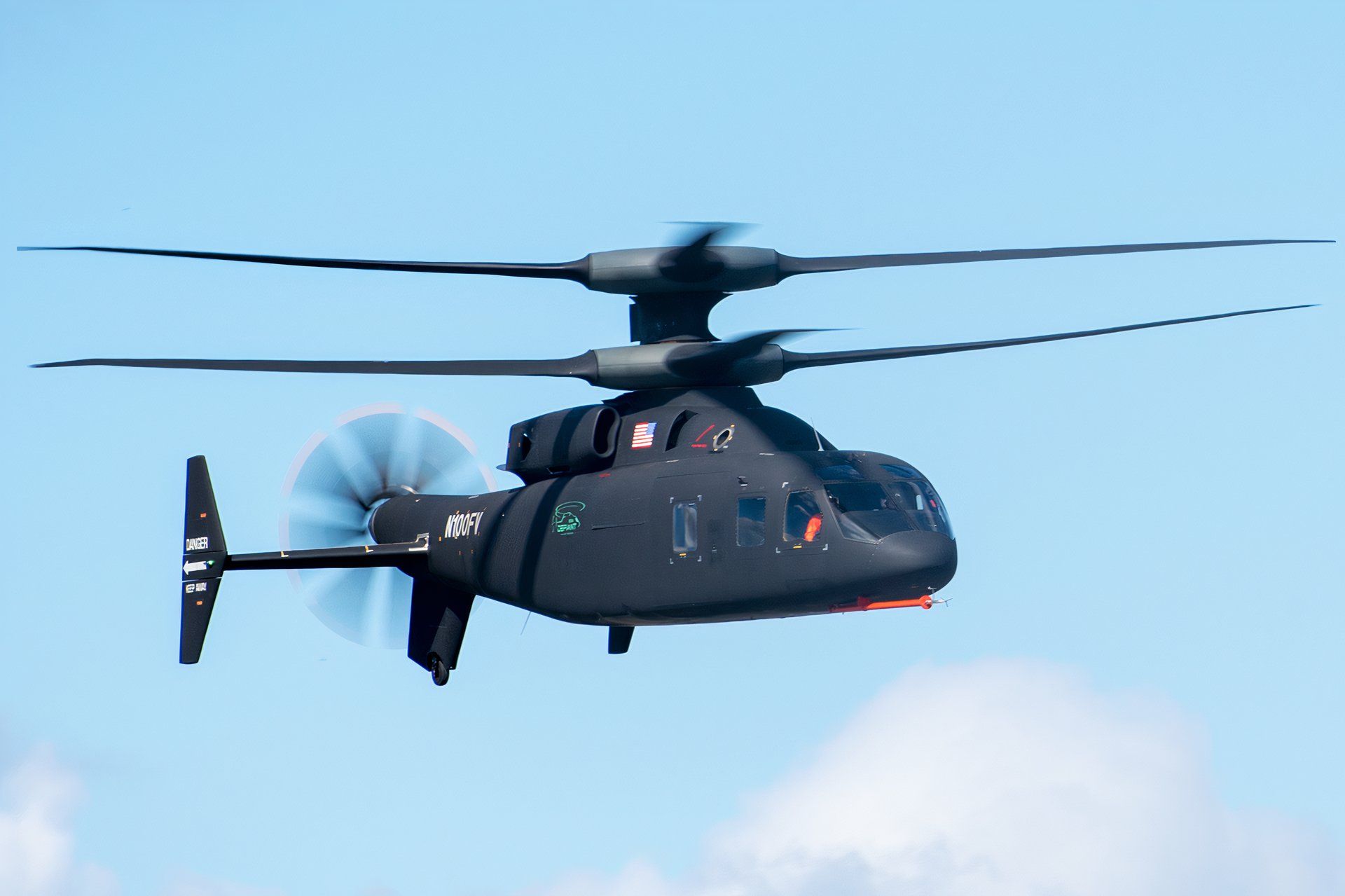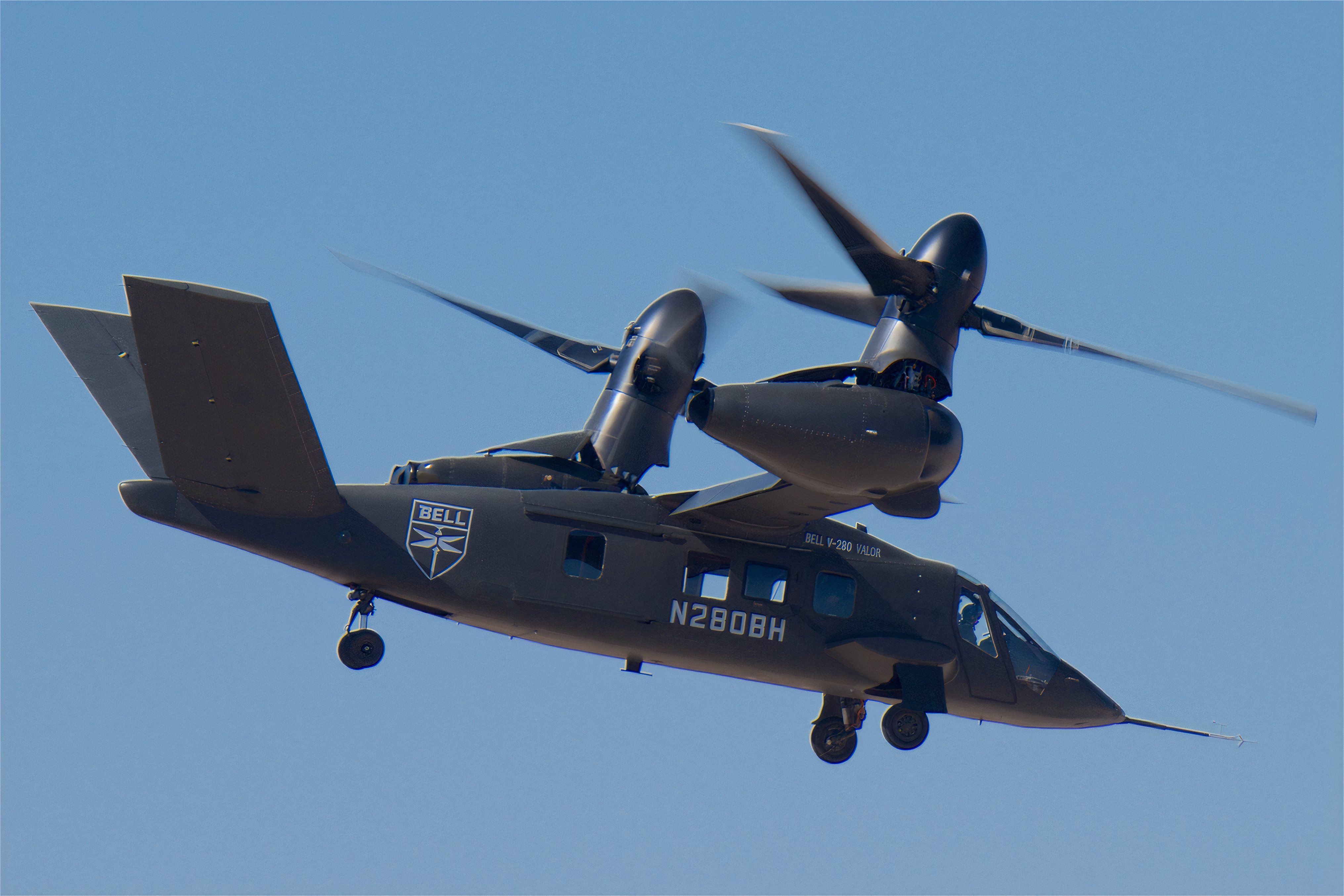Following combat operations in Kuwait and Iraq during the Gulf Wars and the war against terror in Afghanistan, the United States Department of Defense began to realize that the Army helicopter fleet was starting to show its age. During wartime, helicopters are used five times as much as during peacetime. While manufacturers have been updating military rotorcraft, helicopters like the Boeing CH-47 Chinook have been in service for over 50 years.
Photo: USAF
Since the early 1990s, the Central Intelligence Agency (CIA) and the United States Air Force (USAF) have been using unmanned aerial vehicles (UAV) like the Northrop Grumman RQ-4 Global Hawk and the General Atomics MQ-1 Predator to provide surveillance and take out the enemy with surface to ground AGM-114 Hellfire missiles.
Ever since Russia invaded Ukraine on February 24, 2022, we have seen how effective drones can be for dropping bombs, firing a rocket, or crashing into a target.
With drones playing a bigger role in conflicts, it’s unsurprising that the United States Army (USA) has been working on autonomous aerial vehicles to replace its UH-60 Black Hawk, AH-64 Apache, CH-47 Chinook, and OH-58 Kiowa helicopters.
The Army wants helicopters to fly faster and further than they do today
The United States Department of Defense established the Future Vertical Lift (FVL) program in 2009. The strategic plan was to develop a joint approach for the next generation of vertical lift aircraft for all military services. When speaking about the program to develop future vertical lift aircraft at the National Defense Industrial Association’s Army Science and Technology Conference in Washington, DC, National Defense Magazine quotes Army Vice Chief of Staff Gen. James C. McConville saying:
“We’re looking at basically going beyond the helicopter capabilities that we have today. We want increased range. We want increased speed. We want increased lethality.” Adding, “Quite frankly, we’re being very demanding as we talk to industry — cost matters,” he said. The service wants the aircraft to be delivered at a similar price tag to what it’s paying for aircraft today.”
“As a kid, my parents bought a black-and-white TV and it cost so much money,” he said. “Now we’re getting a brand new smart TV with all this stuff on it” for the same price.
“We’re telling industry, ‘If you can’t do it, let us know,'” he said. “We don’t have the resources to spend an extraordinary amount for future vertical lift.”
Three new vertical lift vehicles are being worked on
Currently, five new rotorcraft have been selected as replacements, and they are:
- JMR-Light: A scout helicopter to replace the Army’s OH-58 Kiowa, but with all the advances in drone technology, having a manned reconnaissance helicopter is now unnecessary. After spending nearly $2.4 billion on a light reconnaissance helicopter, the Army saw how drones were being used in Ukraine and decided the need for human-crewed scouting vehicles was now obsolete.
- JMR-Medium: In 2022, the United States Army (USA) selected the Bell V-280 Valol tiltrotor as the vertical lift vehicle of choice to replace the Sikorsky UH-60 Black Hawk.
- JMR-Heavy: A new vertical heavy lift vehicle with the performance of a similar-sized fixed-wing transport aircraft such as the Lockheed Martin C-130J Super Hercules.
For the first time since the United States Army (USA) canceled its next-generation Future Attack Reconnaissance Aircraft (FARA) helicopter program, the USA held a major experimental event at its Yuma, Arizona Proving Ground. Out of 36 applicants, five were chosen to participate.
Billed as the Experimental Demonstration Gateway Event (EDGE), 24 of the technologies on display included:
- One robot.
- Seven ground technologies.
- Three aerial platforms.
- 28 launched-effect surrogates (uncrewed aerial vehicles that can be launched from another platform).
Tests of launch-effect surrogates, using Army UH-60 Black Hawks as launch vehicles, are planned to begin early next year.

Related
Top 5 Capabilities Of The Sikorsky UH-60 Black Hawk
The Black Hawk’s capabilities have made it one of the world’s most versatile military helicopters with a diverse range of roles.
During a meeting with reporters following the EDGE 24 tests in Arizona, members of the Army who witnessed the event told the media that the latest experimental aircraft were driving the Future Vertical Lift program. While not providing any details on the specific test or the technologies used, Sandboxx News quotes one of the officers as saying:
“Representative threat systems have been placed across the ranges of the proving ground, with radars, high-speed cameras, and other data-collection devices positioned to capture just how the systems performed.”
Up until the war in Ukraine, the United States Army (USA) only used unmanned aerial systems (drones) for recognizance. Now, the Ukrainians have demonstrated how they can be used as lethal weapons to take out armored vehicles and troops. The Ukrainians have developed a drone they call “Dragon,” which can fly over enemy trenches and drop liquid fire on the troops below.
The liquid expelled from the drone is called “Thermite.” While not explosive but for a few brief bursts, Thermite is a pyrotechnic composition of metal powder and a metal oxide that, when ignited, burns at about 4,440 degrees Fahrenheit. Once ignited, the only way to extinguish Thermite is to deprive it of oxygen, which means that if it is out in the field, it will destroy, kill, or severely injure everything it touches.
Despite the advances in autonomous technology, it is important to understand that a human operator is still needed on the ground, especially if the vehicle is deployed from a rotary-powered platform.
For its next experimental event, the Army plans to emphasize using UAVs as lethal weapon delivery vehicles and see how they can be combined with other platforms so that they can be paired with next-generation long-range assault aircraft.

Related
Fighter Jets Vs Drones: Will UAVs Take The Lead In Combat?
UAVs complement the capabilities of traditional fighter jets.







